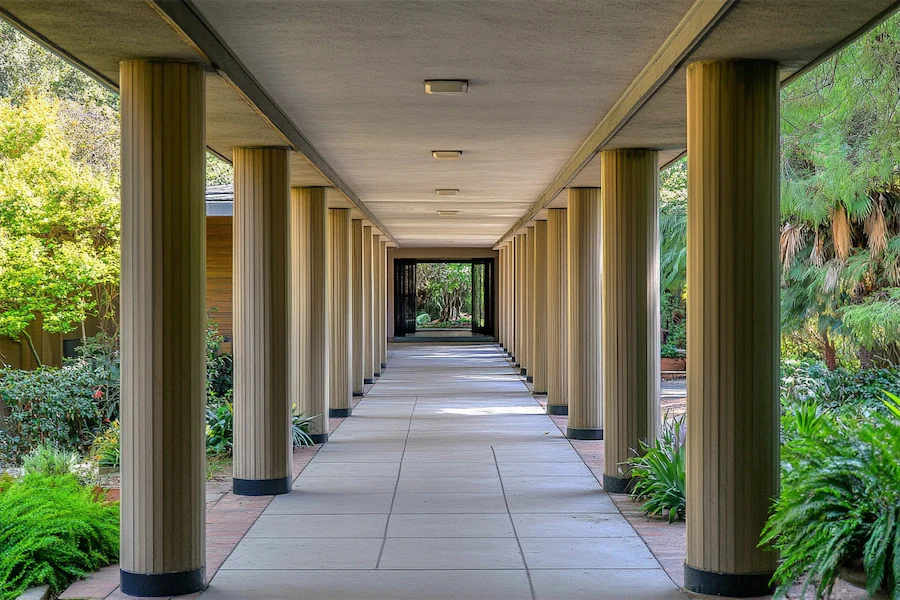Mid-century modern architecture, spanning from the mid-1940s to the late 1960s, is celebrated for its clean lines, functional forms, and seamless integration with nature. Columns in this architectural style are not merely structural supports but also key design elements that contribute to the open and airy aesthetics of mid-century modern buildings.
History and Origins of Mid-Century Modern Columns
The mid-century modern movement emerged in the post-World War II era, influenced by the International and Bauhaus styles, emphasizing simplicity and functionality. Architects like Ludwig Mies van der Rohe and Frank Lloyd Wright incorporated columns into their designs to create open floor plans and blur the boundaries between indoor and outdoor spaces. For instance, Wright’s design for the Johnson Wax Headquarters features “dendriform” columns that resemble lily pads, showcasing both structural innovation and aesthetic appeal.
Key Features of Mid-Century Modern Columns
Mid-century modern columns are characterized by:
- Simplicity: Columns often have unadorned, clean lines, reflecting the minimalist ethos of the era.
- Integration with Design: They are harmoniously incorporated into the overall architectural design, contributing to open floor plans and enhancing natural light.
- Use of Modern Materials: Materials such as steel and reinforced concrete are commonly used, allowing for slender profiles and greater structural flexibility.
- Functional Aesthetics: Columns serve both structural purposes and as aesthetic elements, often positioned to enhance the visual flow of space.
Applications of Mid-Century Modern Columns
In mid-century modern architecture, columns are utilized in various ways:
- Open Floor Plans: Columns enable large, unobstructed interior spaces by supporting roofs without the need for load-bearing walls.
- Indoor-Outdoor Connection: They support extended rooflines and overhangs, facilitating a seamless transition between indoor and outdoor living areas.
- Decorative Elements: While primarily functional, columns are also used decoratively to enhance the geometric harmony of the structure.
Considerations When Choosing Mid-Century Modern Columns
When incorporating mid-century modern columns into contemporary designs or restorations, consider the following:
- Material Selection: Opt for materials that reflect the mid-century modern aesthetic, such as steel or engineered wood, ensuring they meet current building standards.
- Proportionality: Maintain the slender and unobtrusive proportions typical of mid-century columns to preserve the style’s characteristic openness.
- Integration with Design: Ensure that columns complement the overall architectural design, contributing to the functionality and aesthetic coherence of the space.
Conclusion
Mid-century modern columns exemplify the marriage of form and function, playing a pivotal role in creating the open, light-filled spaces that define the architectural style. Understanding their historical context and design principles is essential for architects and designers aiming to incorporate mid-century modern elements into contemporary projects.
